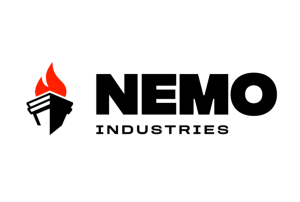
Pig iron prices poised for an increase?
The price of pig iron looks to strengthen as producing nations cite rising ferrous scrap values.

The price of pig iron looks to strengthen as producing nations cite rising ferrous scrap values.

Canadian steelmaker Algoma's plans to bring forward the scheduled full transition to electric-arc furnace (EAF) steel production by one year merits a revisit. Why? Because of its potential impact on ferrous scrap flows between the US and Canada.

NEMO Industries CEO Daniel Liss has already made waves with his bold plan to bring pig iron production back to US soil. In an SMU Community Chat on Wednesday, he shifted the conversation from inspiration to execution, laying out timelines, financing strategies, and customer demand that could reshape the steel supply chain by the end of the decade.

You might be looking forward to some Black Friday deals. But I wouldn't expect many, at least when it comes to flat-rolled steel.

The situation has altered in the Brazilian pig iron market since our last update on Nov. 13. At the time, we reported things were at a standstill for sales to US-based steelmakers.

A colorful serial entrepreneur, NEMO Industries Co-founder and CEO Daniel Liss has done everything from working for Hollywood star Sofia Vergara to building a venture-backed Instagram competitor Dispo. He is new to steel but not short on potentially transformative ideas.

Recollections of better days in Ukraine.

Most steelmaking raw material prices remained stable over the past month. Prices are mixed in comparison to this time last year.

The pig iron market is at a standstill since the last sale to the US several weeks ago.

The pig iron market in Brazil saw some activity last week that could present some additional options to producers there, but at lower price levels.

NEMO Industries CEO talks cost and reasoning behind a $3-billion pig iron project in Louisiana.

US buyers want to drop pig iron prices to levels commensurate with the decline in prime scrap in their domestic market. Prime price shed $20 per gross ton (gt) in September and another $20/gt in October.

Musings on decarb, tariffs, and technology, and where it might be leading.

SMU spoke with a large channel in Brazil who confirmed his company sold a cargo of 50,000 metric tons (mt) to a US buyer at $383/mt FOB Brazil. That's down $12/mt from the last cargo sold in September.
In the Americas, the ongoing conversion to EAF melting is driving demand for prime grades of scrap and increased use of ore-based metallics

NEMO Industries has announced a venture to build a pig iron plant in Louisiana. The plant will use advanced technologies, including integrating AI.
Most steelmaking raw material prices held steady or ticked higher over the past month

A compromise has been reached in the pig iron market, sources told SMU. Recall we reported US buyers were bidding $390 per metric ton (mt) FOB or less while sellers were holding sideways at about $400/mt.

The pig iron market in Brazil is currently in flux and there have been few, if any, confirmed cargoes transacted for the US.
U.S. Steel said it plans to reduce slab consumption at its Granite City Works near St. Louis, a company spokesperson said on Monday. The Pittsburgh-based steelmaker will shift the production and processing of steel slabs to its Mon Valley Works near Pittsburgh and its Gary Works near Chicago. Citing a United Steelworkers (USW) union memo, […]

Here are highlights of what’s happened this past week and a few upcoming things to keep an eye on.

The Brazilian-US pig iron market has remained quiet, market sources told SMU.
Most steelmaking raw material prices we track saw little change across the month of August. Iron ore, pig iron, shredded scrap, busheling scrap, zinc, and aluminum prices all held relatively steady,

Prices remain subdued in US pig iron market, sources said.
What the word "sideways" means can depend on where you sit on the procurement spectrum.
Prices for four of the seven steelmaking raw materials we track were unchanged from late June through the end of July, while two increased and one declined. Collectively, these material prices rose 1% month over month (m/m), but are down 3% compared to three months ago.

The Trump administration has exempted Brazilian pig iron and iron ore from an aggressive "reciprocal" tariff ahead of the Aug. 1 deadline.

The Brazilian pig iron community is playing defense ahead of the Aug. 1 deadline for a 50% US tariff on imports from the South American country. The moves indicate the Brazilian producers do expect the tariff to go into effect.
Steel Dynamics Inc. (SDI) executives called a 50% tariff on Brazilian pig iron “concerning,” but think tariffs will be a “mainstay” of trade agreements going forward.
A tariff on Brazilian pig iron could cause great upheaval in the market.